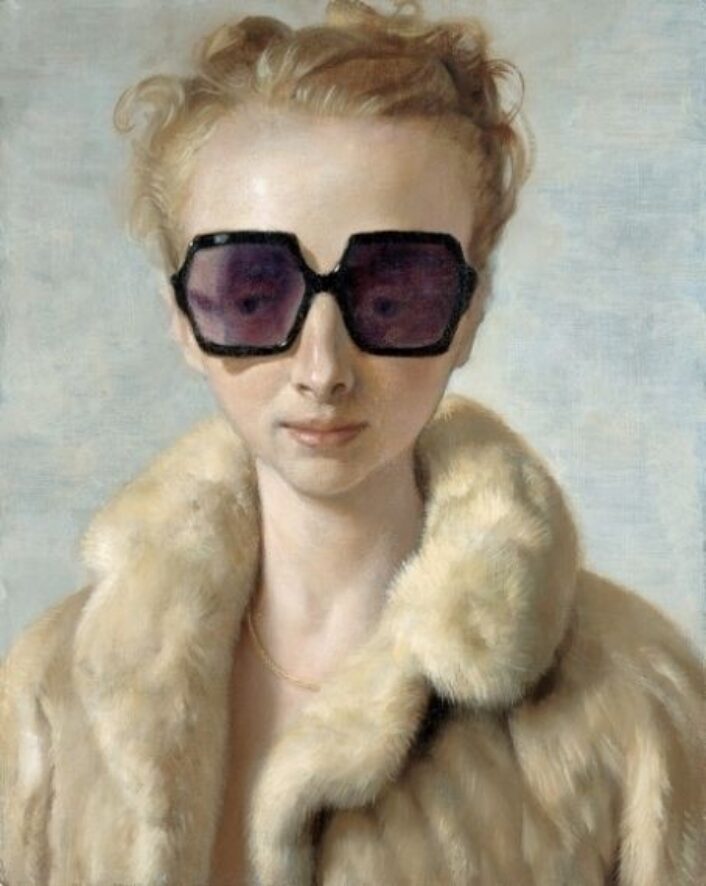Always inspired by portraiture, we were invigorated as we combed through the upcoming art auctions in London, and inspired to create a dialogue from a selection of our favorites currently on offer with those we hold in our dream collection. Enjoy!
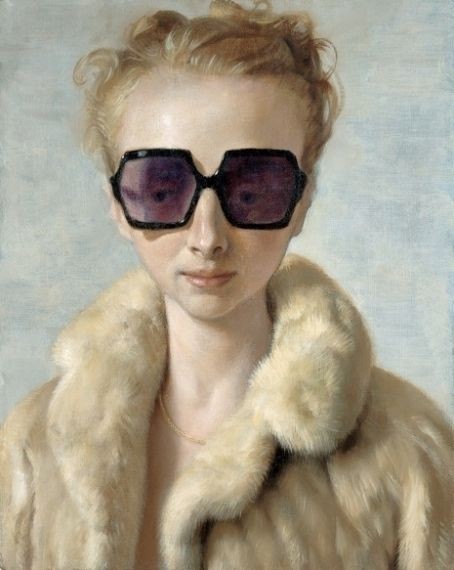
John Currin (American b. 1962), Rachel in Fur, 2002.
Image courtesy of The Gagosian Gallery via Vogue
Portraits, nudes, and genre scenes have occupied most of John Currin’s attention, and several critics have noted his increasing mastery of these antique forms. Arthur C. Danto, writing in The Nation in 2004, called him “a virtuoso of a style and manner that would have been admired in Ferrara or Parma in the 1550s,” and went on to describe him as “one of the brightest art stars of the early twenty-first century.” Not every critic would agree with this assessment, but few have been harder on Currin than he tends to be on himself. “I’ve always felt insecure about being a figurative artist, and about being an American painter. To me, oil painting is inherently European. My technique is in no way comparable with that of a mid-level European painter of the nineteenth century. I suppose in the end what I do is my version of being progressive—that I thought my only chance was to regress in the face of everything. I wanted my paintings to be difficult—I just didn’t think they’d be difficult in this way.” [The New Yorker]
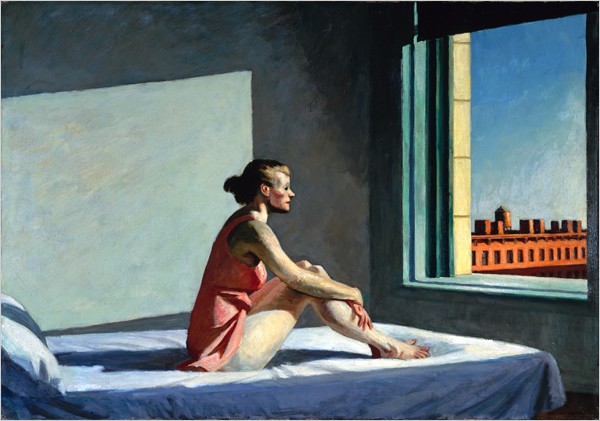
Edward Hopper (American, 1882-1967), Morning Sun, 1952
Image courtesy of The Museum of Fine Arts, Boston
This is the Hopper Effect: the impression of everyday life touched with secular sanctity. It’s when Hopper lets light take over, assume the leading role, that the late paintings work. It does so again in “Morning Sun” (1952), in which a woman — Hopper’s wife, Jo, his principal model — sits in profile, in a pink slip, on a bed, staring out a window as light hits her pinched cheeks and raw-red hands. (Holland Cotter for The New York Times)
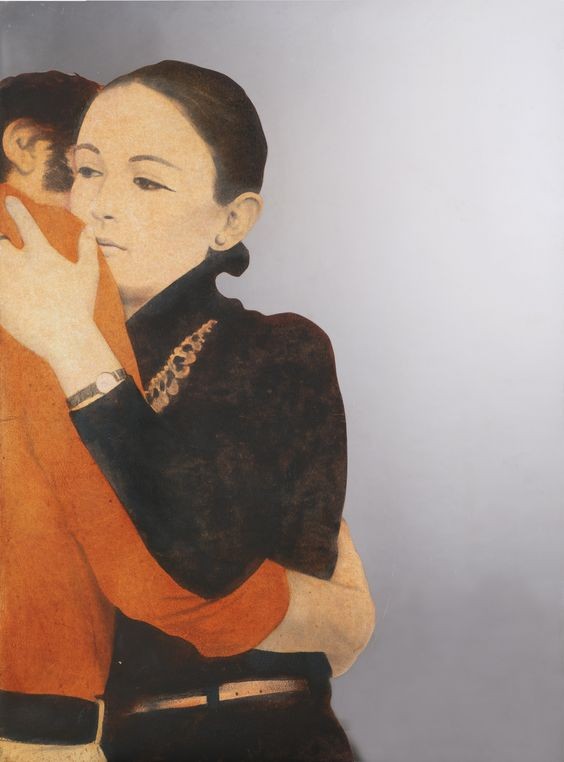
Michelangelo Pistoletto (b. 1933), Innamorati (Maria E Michelangelo), 1967
Image courtesy of Sotheby’s Contemporary Art Evening Auction, 10 February 2016
Comprised of a graphic self-representation taken from a film still of the artist and his wife Maria Pioppi enclosed in a passionate embrace, Innamorati (Maria e Michelangelo) (Lovers, Maria and Michelangelo) is an early example of Michelangelo Pistoletto’s most important and instantly recognisable series, the Quadri Specchiati or Mirror Paintings.
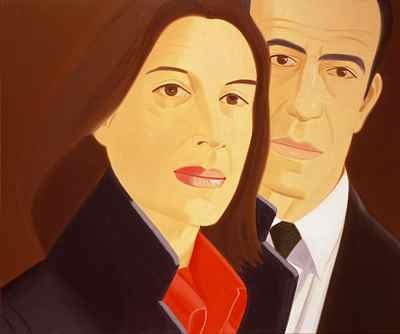
Alex Katz (American, b. 1927), Ada and Alex, 1980
Image courtesy Culture Vulture
The process of being observed never ends, and artists who paint what they see have to decide what to show and how to show it. Alex Katz makes these kinds of decisions all the time, especially when the subject is Ada, whom he first painted in 1957, and married the next year, so you can see how crucial they are. She’s not just anyone but his wife, his constant muse and model, star, and he’s painted her in many divergent situations — as part of a crowd, or a landscape, in private, alone, or in multiple versions of herself in the same painting.
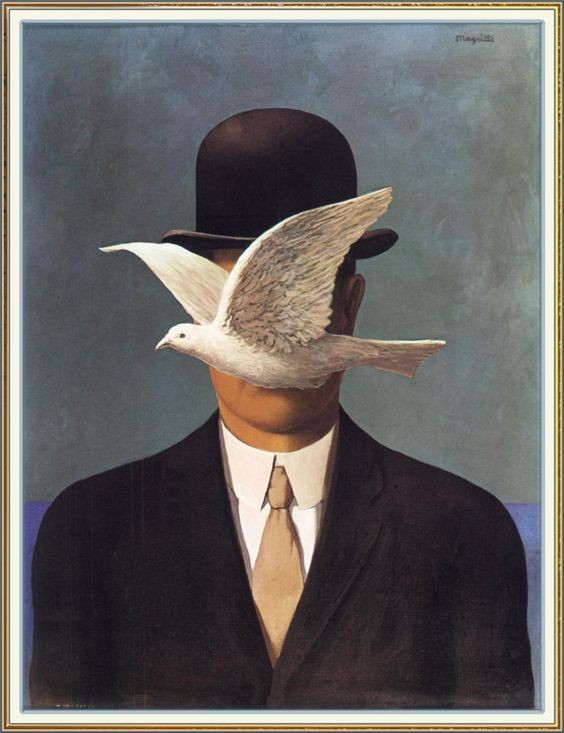
Rene Magritte (Belgian, 1898-1967), Man in A Bowler Hat, 1964
Image courtesy of Wikiart.org
Painted the same year as his famous The Son of Man and The Great War, the artist utilizes a bird in flight to obscure the face of his iconic man in a bowler hat c. 1964.
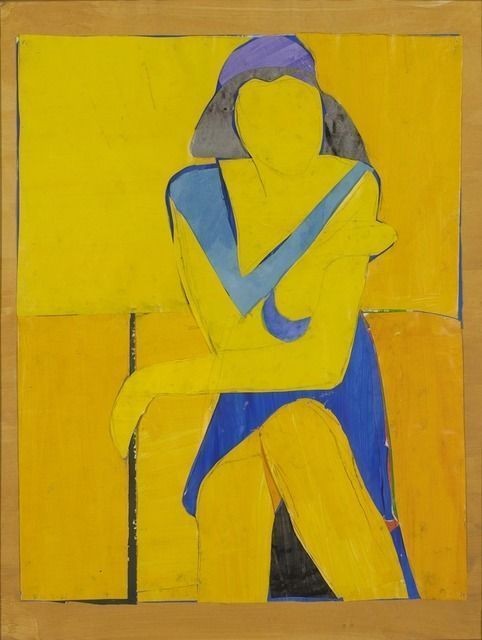
Richard Diebenkorn, Untitled (Yellow Collage), 1966
Image courtesy of The Richard Diebenkorn Foundation via Artsy
Bay Area artist Richard Diebenkorn is known for an abstract and layered representation of landscape and figure.
